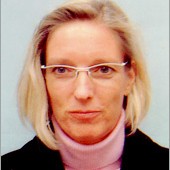Reading ‘Questioning the Agency of Cultural Affairs’
The Japan Council of Performers’ Organizations (Nihon Geinō Jitsuenka Dantai Kyōgikai), or Geidankyō, was founded in December 1965. Since then this nonprofit organization has achieved considerable success in ameliorating the social status and welfare conditions of performers. Geidankyo has been especially effective in the field of copyright and neighboring rights, overcoming legal obstacles as well as the problems intrinsic to a highly diversified organization. Membership in Geidankyo ranges from individual performers to jazz musicians to Nō actors, for example.
During an Extraordinary General Meeting in December the membership rejected a proposal to invest 110 million yen of the organization’s 130 million yen seed capital in a construction project at a former primary school facility Geidankyō now rents from Shinjuku Ward. The facility is used now for lectures and educational programs for its members. The rejected proposal would have used Geidankyō’s seed money to fund the construction of a new rehearsal facility for opera productions to be performed at the New National Theatre.
Just a little more than four weeks later, a second Extraordinary General Meeting was called to vote again on exactly the same proposal. As Mr. Tanano has pointed out in his article on this website (Bunkachō ni tai suru gimon. Questioning the Agency of Cultural Affairs) there must be a strong reason as well as the approval of the Minister of Education, Culture and Science to dissolve the seed money of the organization. Obviously, Geidankyō was more than determined to invest its seed capital in this construction project and thus convened a second General Meeting, where the proposal was finally approved. As we learned from a comment on this website by a member who attended the meeting, many proxy letters from attorneys were submitted. Some of them were even blank.
Why is Geidankyō so eager to use money accumulated and earned by its own organization, mainly the Center for Performers’ Rights Administration (CPRA), to built a rehearsal facility for the New National Theatre and other opera groups performing at that venue? Generally, providing rehearsal facilities for opera singers is a laudable and generous project. However, there are other member groups and organizations of Geidankyō in need of such facilities. Consideration of their needs should have priority. There should have been some restraint by those members voting for the disbursement of funds. I wonder how consensus was built regarding this issue. Thus the exigency of a second General Meeting’s vote?
If it is just a question of making big money for the sake of the organization and its membership as a whole, or the Center for Performers’ Rights Administration itself, dissolving the seed capital does seem to make sense. However, a focus on doing business and making a profit has never been the aim and intention of Geindankyō and contradicts its status as a nonprofit organization.
Anyhow, there is still the question of the merit of this decision for the performers and performing artists’ groups. They have gone so far as to approve of dissolving the seed money of their very own umbrella organization. In doing so, haven’t they consented to the dissolution or disruption of the underlying principles of their own organization?
To put a once rejected proposal again to vote, in my opinion, shows a lack of respect for the integrity of the member organizations. This process indicates a troubling attitude for a government-approved nonprofit organization in a democratic country.
The education and training of professional opera singers, established in 1998, was the first training program of the New National Theatre. It is hard to understand how the facilities of this theatre, built just ten years ago, are insufficient, even provided that management policies might have changed. The impression of a lack of long-range concept and vision cannot be denied.
It is not easy to understand why the Agency of Cultural Affairs needs to rely on the seed money of a private, nonprofit organization in order to realize its own state-run projects. As Mr. Tanano has pointed out, inadequate or misleading communication might be one reason.
More involvement, and thus more investment, from private organizations in the cultural and art projects promoted by the Agency of Cultural Affairs could be achieved by means other than counting on using the seed capital of organizations under its own jurisdiction. For example, tax reduction plays a significant role in fundraising efforts in the world of art and culture in the USA.
By dissolving almost all of its seed capital to invest in a real estate project that will benefit a venue also under the supervision of the Agency of Cultural Affairs Geidankyō parts from its main original aim, perhaps even denies it. The role of the Agency of Cultural Affairs in this matter leaves cultural policy affairs in question.


